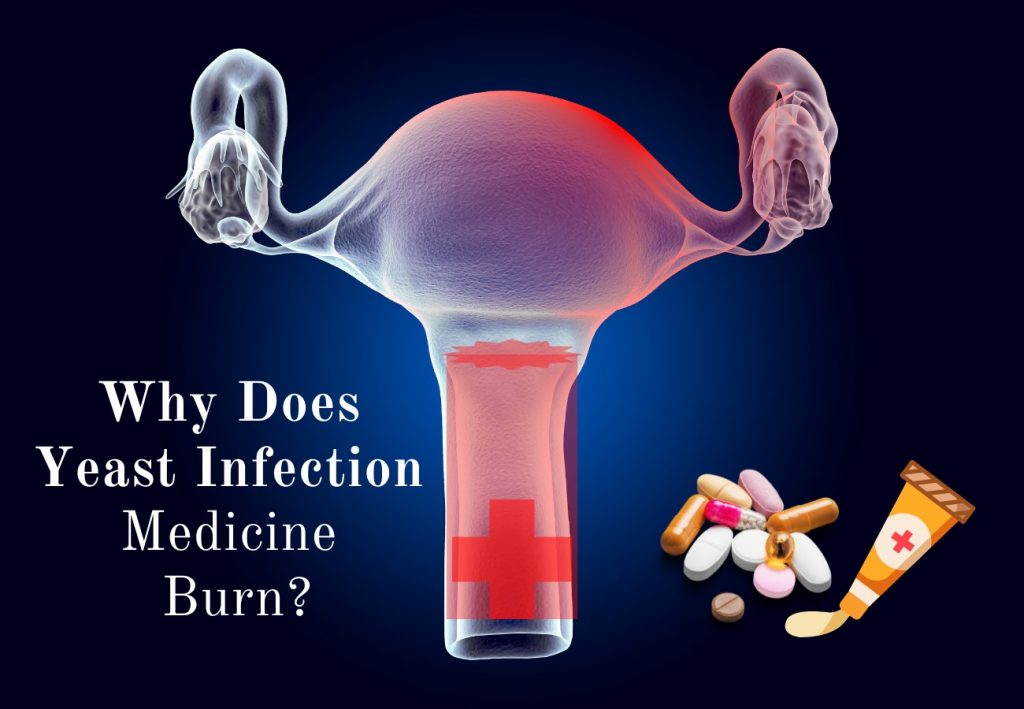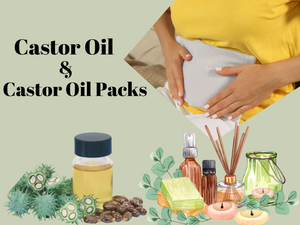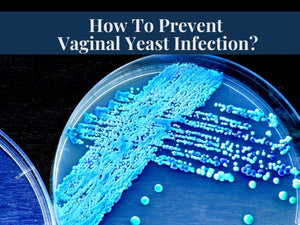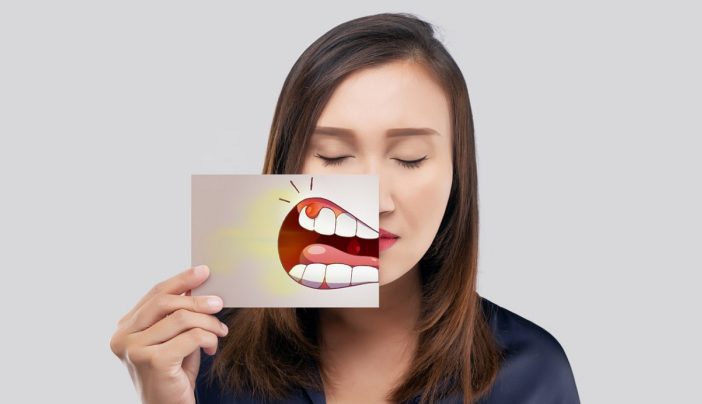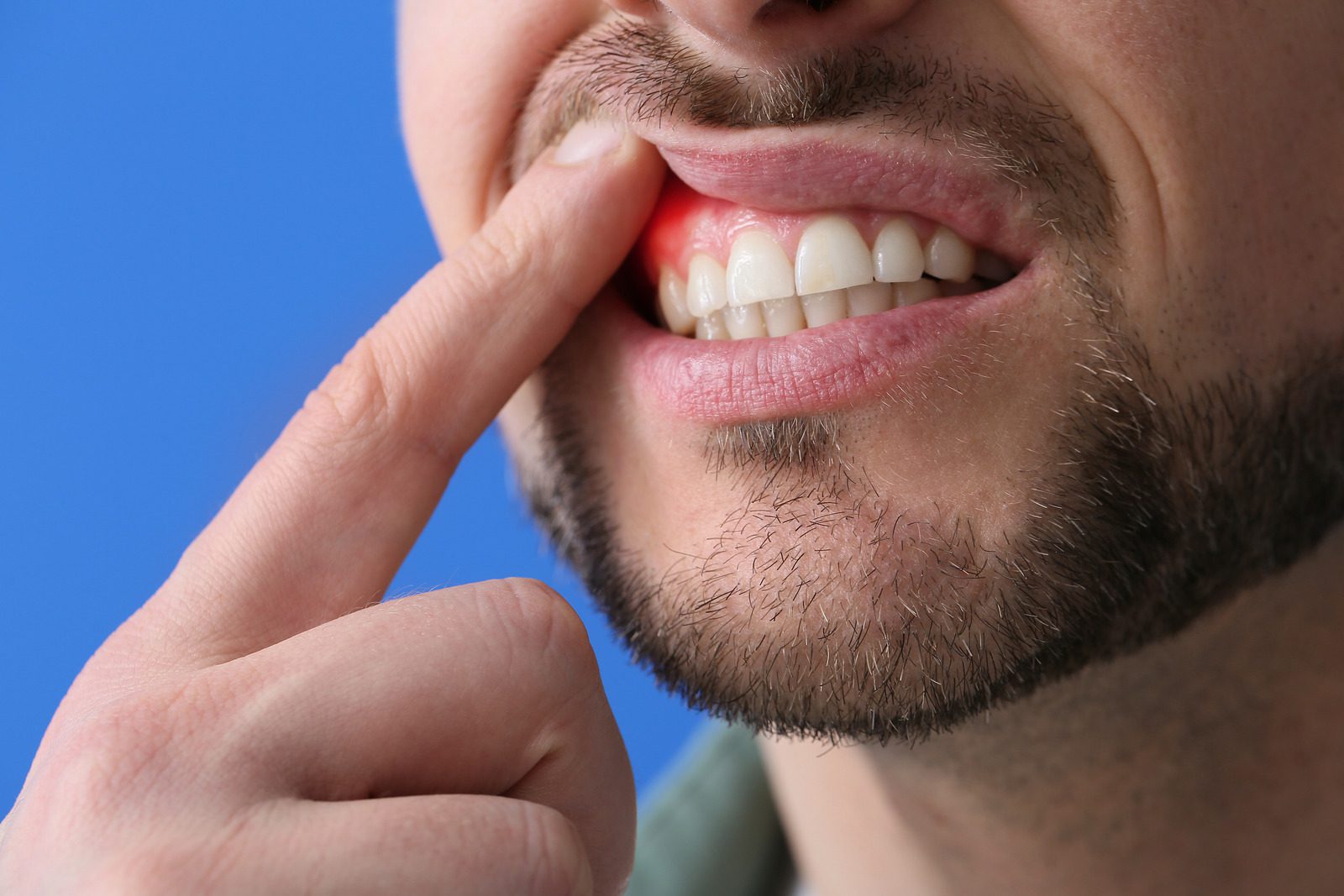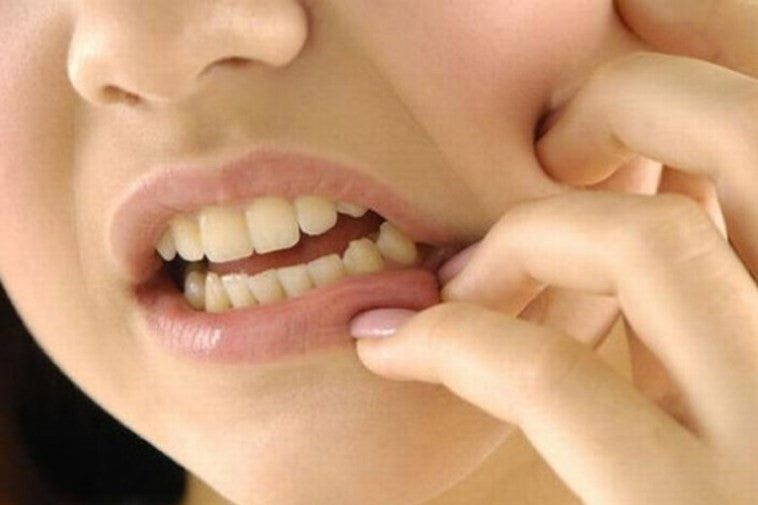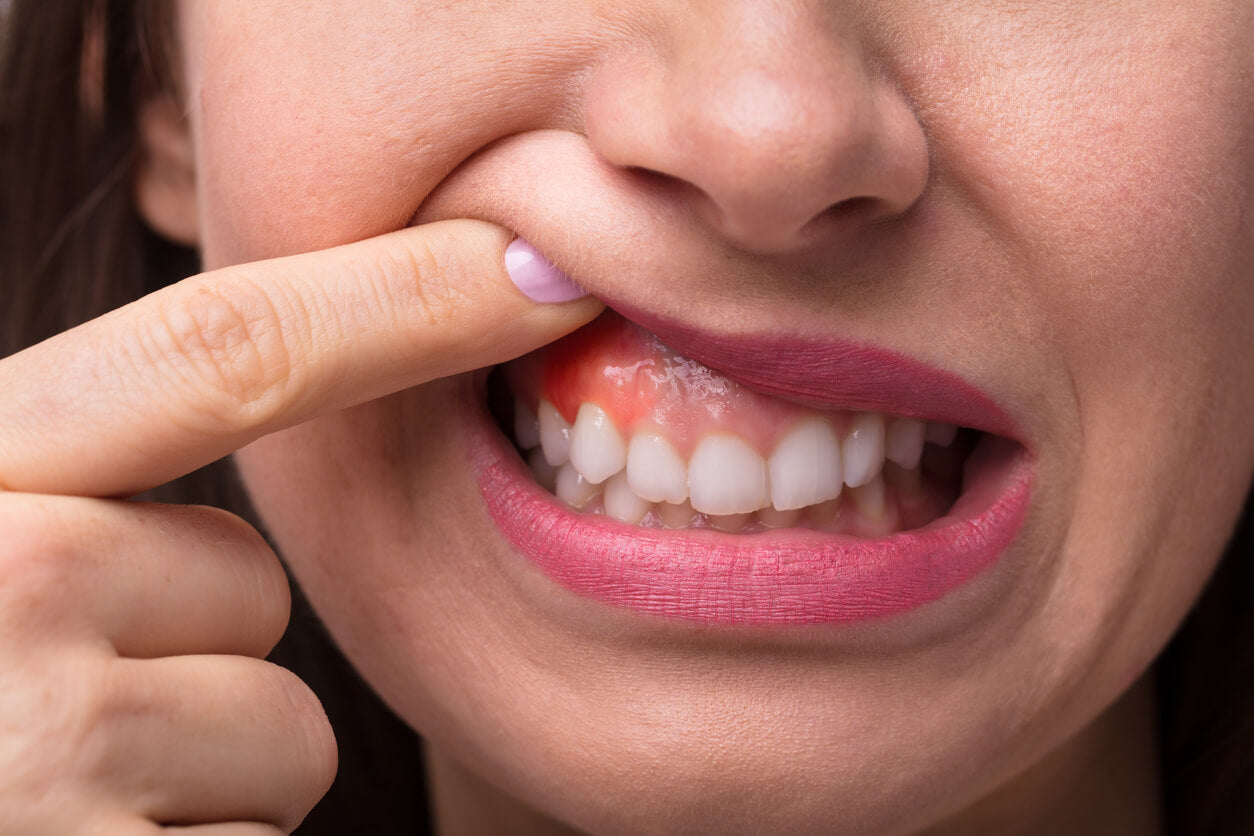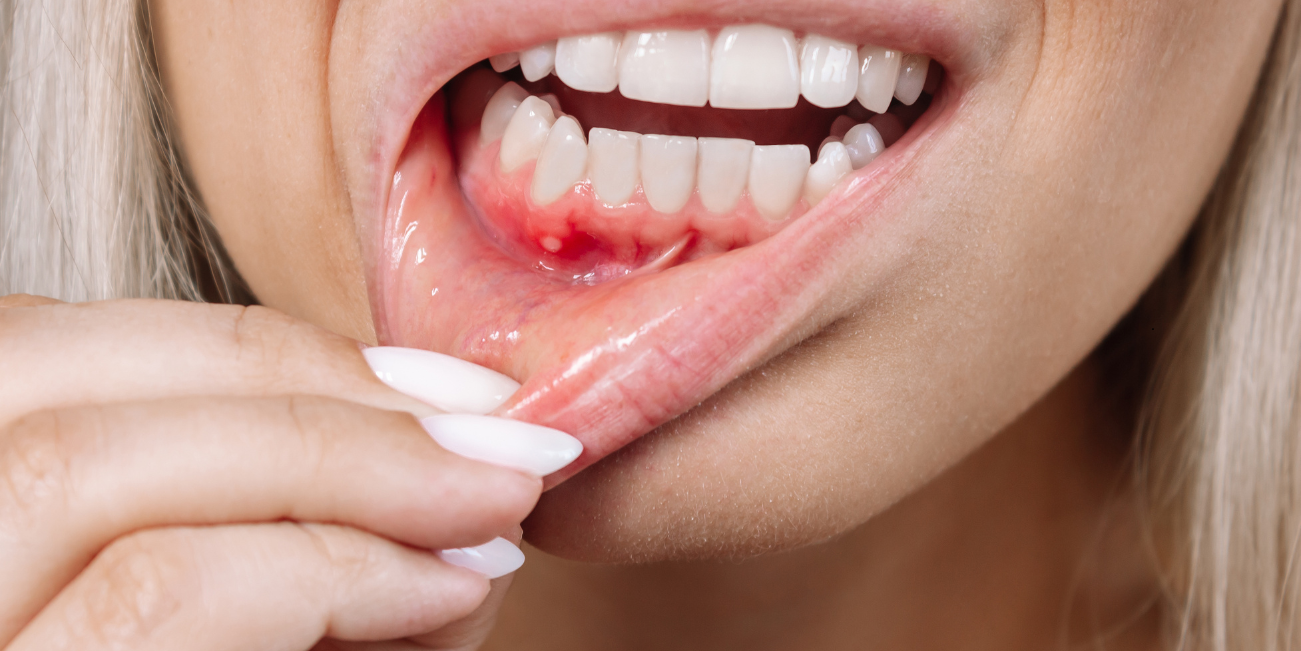Vaginal yeast Infections, also known as Candidiasis, are the most common infections women encounter worldwide. Candidiasis is caused by a fungal specie, particularly yeast, known as Candida albicans. This fungal microbe, though, resides on human skin naturally but, due to unfavorable conditions, thrives and proliferates at its maximum to cause infection. The same specie causes penile infection in males and oral thrush in men and women. However, female yeast infections are common due to anatomical, physiological, and medical conditions.

Moreover, these yeast infections are treated with antifungals available in oral, topical, and suppository dosage forms. Though antifungals treat yeast infections well, many people are concerned about why does yeast infection medicine burn? It\’s a very contentious issue. Many antifungal topical medications are highly potent that they may cause vaginal burning.
Other conditions might be on the patient end, such as vaginal soreness, cracking, having intercourse during yeast infection treatment, or using intrauterine devices. Moreover, interactions with other drugs may cause vaginal irritation, rash, or burning. Our formulation does not burn. However, it causes a warm sensation after application that quickly subsides. Here is an explanation of how and why.
What Is Yeast Infection Medicine?
Yeast infection medicines are those drugs that contain active antifungals in appropriate amounts according to the specifications of prescribed pharmacopeia. Most antifungal medications work by inhibiting fungal ergosterol\’s biosynthesis, which maintains the integrity of fungal cell membranes. Blockade of its synthesis results in decreased ergosterol, making fungal cells susceptible to destruction by antifungals. These yeast infection medicines are both prescribed or over-the-counter drugs.
Nevertheless, since every drug is associated with some common and rare side effects, it\’s best to take them when recommended after an accurate diagnosis. Furthermore, it\’s crucial to complete antifungal treatment for a prescribed duration based on the severity and potency of medicines. Consult your doctor if you are taking other medications to treat other medical conditions to avoid drug-drug, drug-disease, drug-allergy, and drug-food interactions.
Yeast Infection Medicine Products
The common yeast infection medicines mentioned below are available in oral, topical, and suppository forms.
- Miconazole
- Ketoconazole
- Fluconazole
- Terconazole
- Clotrimazole
- Tioconazole
- Butoconazole
- Terbinafine
- Amphotericin B
- Nystatin
Why Does Yeast Infection Medicine Burn?
Though every medicine has some side effects, common or rare, mentioned by the manufacturer on the leaflet inside the packaging for legal purposes, it\’s only sometimes true that humans administering antifungal medicine will get the side effects. Usually, oral yeast infection medicines do not cause vaginal burning or irritation since these are topical manifestations. Oral antifungals cause GI issues such as nausea, vomiting, diarrhea, abdominal pain, or headache. In addition, topical yeast infection medicines, including creams, ointments, and gels, may cause vaginal irritation or burn under certain conditions.
Why Does Yeast Infection Medicine Burn? Typically, the vagina and vulva produce mucus secretions to protect the reproductive tract against harmful microbes and other foreign invaders. Moreover, it lubricates the vaginal cavity and helps maintain a good acidic balance. These secretions can also absorb chemicals that may produce a warm or burning sensation due to interactions with active ingredients or excipients. Therefore, some patients complain about burning after using yeast infection medicine. Anyhow, there may be other causative factors of vaginal burning while on yeast infection treatment.
When Does Yeast Infection Medicine Burn?
Sometimes, topical antifungal is highly potent, and the patient’s infection is brutally aggravated with vaginal soreness or cracking that may cause a burning sensation. It may happen that a person is using period products such as tampons or having sexual intercourse during yeast infection treatment, causing friction and resulting vaginal burning. Moreover, the patient may be doing douching or taking sitz baths regularly, resulting in vaginal dryness and cracking, which, when combined with antifungal medication, causes burning.
The Dos And Don\’Ts
The following are the dos and don’ts to consider to avoid yeast infection medicine burn.
The Dos
- Keep yourself hydrated and drink plenty of water to flush away yeast cells through urine. It will shorten the treatment duration and risk vaginal burning, irritation, or drying.
- Eat fresh fruits and vegetables in moderation to avoid glucose excess, which is a food for yeast.
- Consume natural or synthetic probiotics such as Greek Yogurt with no added sugars, kefir, kombucha, buttermilk, miso soup, and supplements available in the market.
- Always change your damp clothing, such as gym suits or swimsuits, immediately after the activities.
- Take a bath regularly and maintain hygiene, especially during periods.
- Always wipe from front to back.
- Always wear cotton pantyhose.
Read: How Much Water To Drink To Flush Out Yeast Infection? Heal Yourself With Water
The Don’ts
- Do not wear tight-fitting clothes such as leggings, stockings, jeans, etc.
- Do not use satin or silk lingerie that can hold moisture
- Do not consume too many sugary foods
- Do not use any intrauterine device for contraception and tampons
- Do not engage in sexual activity, or it will cause vaginal burning even if using yeast infection medicine due to friction
- Do not scratch your vaginal skin, or it causes cuts and burns when an antifungal medication is applied.
When To Seek Professional Attention?
You should seek medical attention if you experience increasing burning sensation, irritation, or rash inside the vagina. Though allergic reactions to antifungal medications are rare, they may happen in only a small proportion of women. Allergic reactions might be severe, so it\’s best to consult the doctor immediately.
FAQs
What Is The Recommended Dosage Of Yeast Infection Medicine?
Yeast infection medicines include many antifungals, such as ketoconazole, miconazole, fluconazole, clotrimazole, caspofungin, micafungin, and anidulafungin. The physician recommends these medications in appropriate dosages based on yeast infection severity and potency. It\’s best to consult your doctor for the right drugs, doses, and dosage regimen.
What Drugs Interact With Miconazole?
Oral miconazole may interact with some drugs or produce serious side effects in a very small number of cases, such as warfarin. However, no serious reported interactions of other drugs with topical miconazole exist.
Why Does Miconazole Interact With Warfarin?
Miconazole and warfarin are metabolized in the body by the liver. Administration of these in combination may have a potentiating effect on the warfarin concentration that may result in bleeding.
What Causes A Yeast Infection To Come Back?
Sometimes when you don’t follow the treatment regimen properly and do not complete the antifungal course, some leftover strains may cause a relapse of yeast infection. Moreover, underlying medical conditions such as diabetes, hormonal imbalances, and HIV/AIDS may cause recurrent yeast infections. Others include immunocompromised patients.
Conclusion
In a nutshell, topical yeast infection medicines are applied to a sensitive area of the body, i.e., the vagina and vulva. Sometimes, due to tenderness of the skin and membranes or soreness due to infection, antifungals interact and cause vaginal burning. Most people are unaware of the preventions to adhere to while on yeast infection treatment, such as avoiding sex, contraceptive devices, inserting tampons, or sex toys, which is why they suffer from vaginal burns.
Also Read: How Long To Wait For Sex After Yeast Infection Treatment
Moreover, our yeast infection medicine is precisely formulated to avoid such burns and aches. It may cause a warming sensation after application due to the interaction of active pharmaceutical ingredients or excipients with vaginal secretions, immune cells, and yeast strains. Anyhow, this warmth may subside quickly.
Read: How To Prevent Vaginal Yeast Infections? Dietary And Lifestyle Modifications


